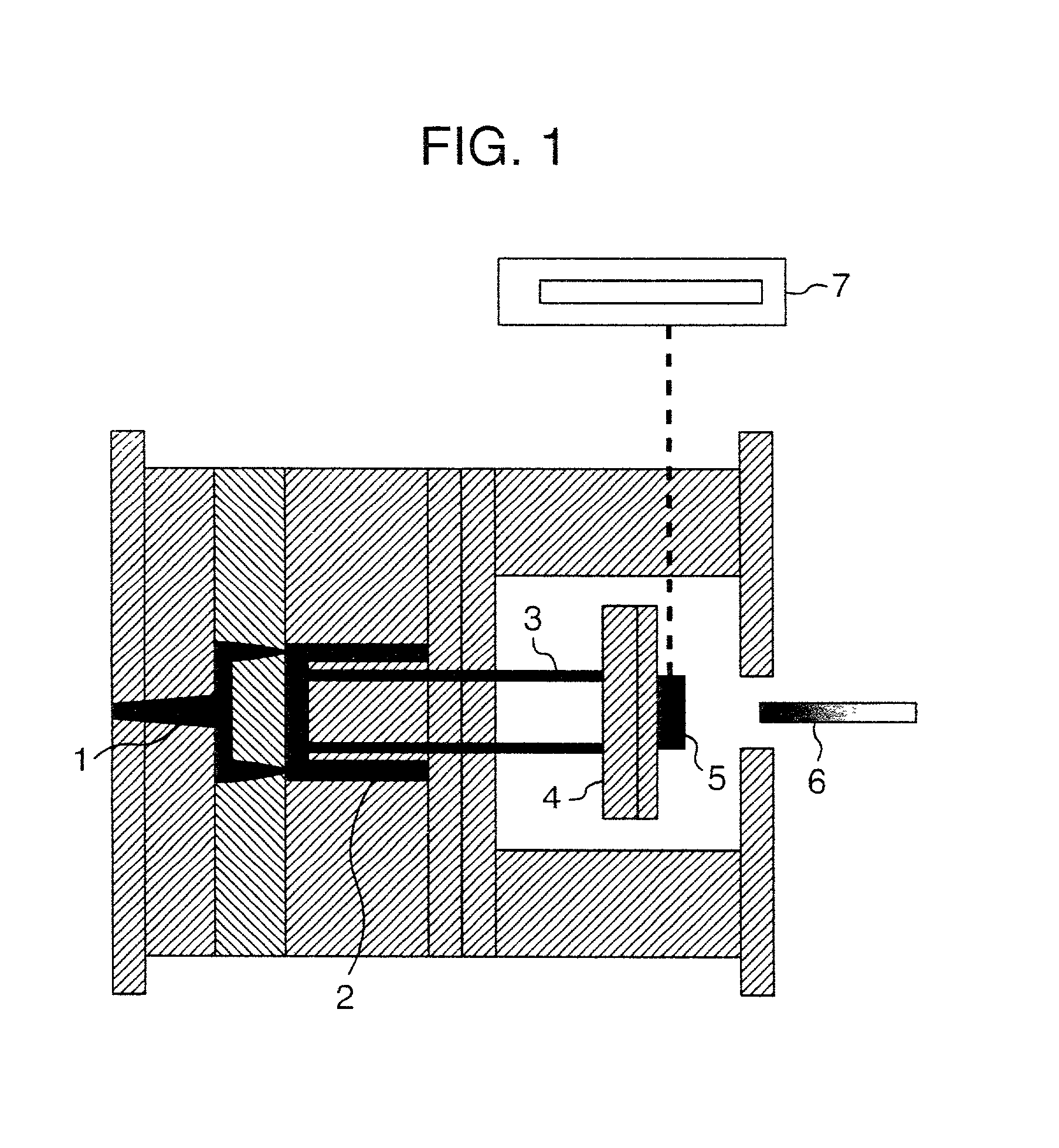Flame retardant reinforced polyamide resin composition
a technology of reinforced polyamide and flame retardant, which is applied in the direction of transportation and packaging, group 5/15 element organic compounds, and other chemical processes, can solve the problems of affecting the use of plastic products containing halogen-based flame retardants, glass fiber reinforced polyamide resin compositions seriously deteriorate in mechanical characteristics, and inferior in electric characteristics, and the effect of reducing the number of times of us
- Summary
- Abstract
- Description
- Claims
- Application Information
AI Technical Summary
Benefits of technology
Problems solved by technology
Method used
Image
Examples
example 2
[0156] Pellets were obtained in the same manner as in Example 1, except that (a-2) was used as the polyamide resin. Test pieces were molded from the resulting pellets and the various characteristics were determined by the above-mentioned measuring methods. The results are shown in Table 1.
example 3
[0157] Pellets were obtained in the same manner as in Example 1, except that (a-3) was used as the polyamide resin. Test pieces were molded from the resulting pellets and the various characteristics were determined by the above-mentioned measuring methods. The results are shown in Table 1.
example 6
[0164] In order to obtain a composition comprising 47.5% by weight of the polyamide resin (a-2), 26% by weight of the flame-retarding agent (b-1), 25% by weight of the glass fiber (c-1) and 1.5% by weight of the polyhydric alcohol (d-1), the polyamide (a-2), the flame-retarding agent (b-1) and the polyhydric alcohol (d-1) were top-fed and the glass fiber (c-1) was side-fed from a feed opening provided at the position of 0.68 of the total length of the extruder, and these were kneaded and taken out in the form of a strand using a co-rotating twin-screw extruder (TEM35 manufactured by Toshiba Machine Co., Ltd.) having an L / D of 47 under the conditions of a cylinder preset temperature of 260.degree. C., a screw rotation rate of 200 rpm, a vent pressure-reduction degree of -53.2 kPa and a throughput rate of 30 kg / hr. After cooling, the strands were granulated by a cutter to obtain pellets of polyamide resin composition. Test pieces were molded from the resulting pellets and the various ...
PUM
| Property | Measurement | Unit |
|---|---|---|
| average particle diameter | aaaaa | aaaaa |
| particle diameter | aaaaa | aaaaa |
| particle diameter | aaaaa | aaaaa |
Abstract
Description
Claims
Application Information
 Login to View More
Login to View More - R&D
- Intellectual Property
- Life Sciences
- Materials
- Tech Scout
- Unparalleled Data Quality
- Higher Quality Content
- 60% Fewer Hallucinations
Browse by: Latest US Patents, China's latest patents, Technical Efficacy Thesaurus, Application Domain, Technology Topic, Popular Technical Reports.
© 2025 PatSnap. All rights reserved.Legal|Privacy policy|Modern Slavery Act Transparency Statement|Sitemap|About US| Contact US: help@patsnap.com

